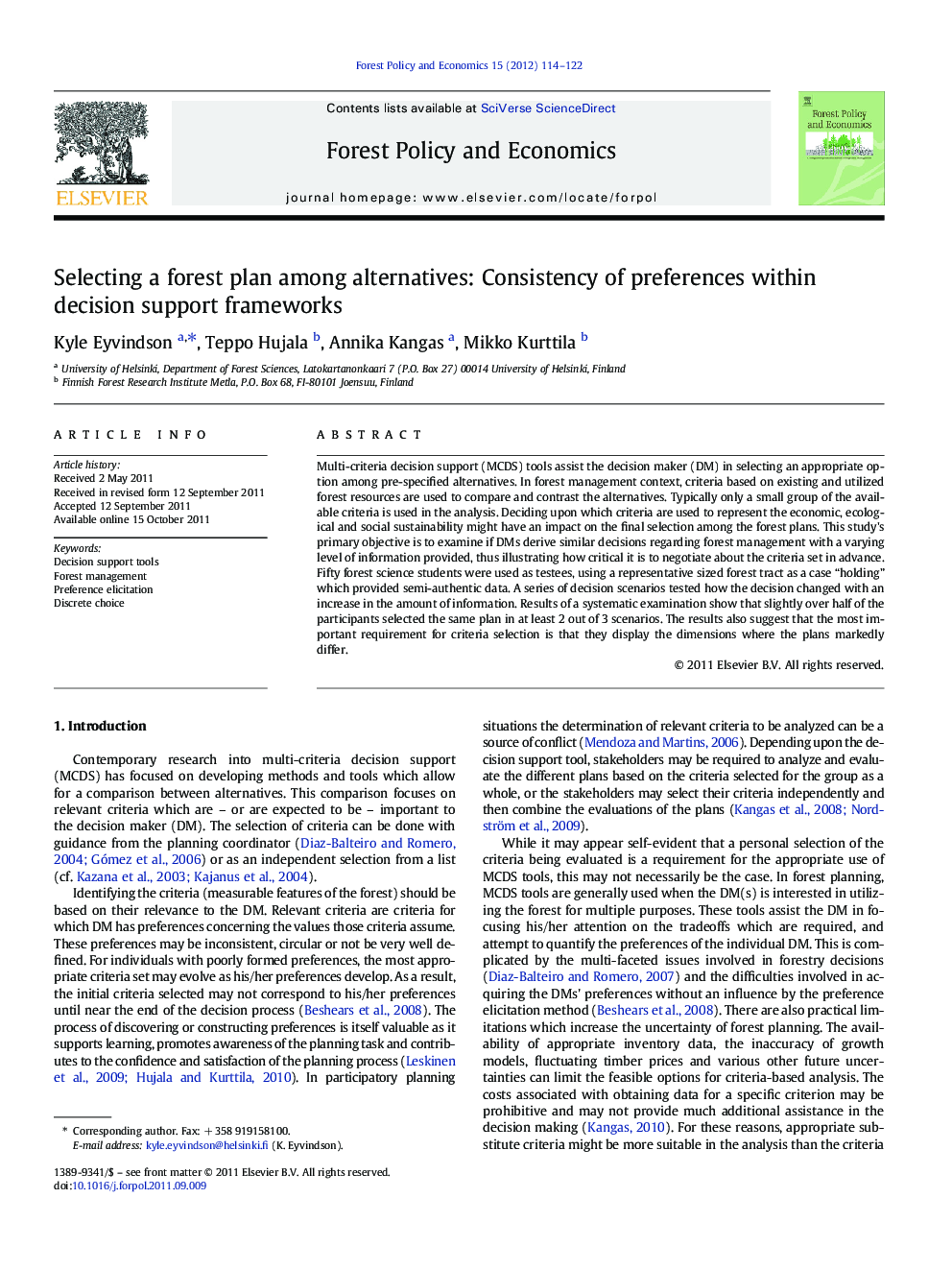| Article ID | Journal | Published Year | Pages | File Type |
|---|---|---|---|---|
| 91418 | Forest Policy and Economics | 2012 | 9 Pages |
Multi-criteria decision support (MCDS) tools assist the decision maker (DM) in selecting an appropriate option among pre-specified alternatives. In forest management context, criteria based on existing and utilized forest resources are used to compare and contrast the alternatives. Typically only a small group of the available criteria is used in the analysis. Deciding upon which criteria are used to represent the economic, ecological and social sustainability might have an impact on the final selection among the forest plans. This study's primary objective is to examine if DMs derive similar decisions regarding forest management with a varying level of information provided, thus illustrating how critical it is to negotiate about the criteria set in advance. Fifty forest science students were used as testees, using a representative sized forest tract as a case “holding” which provided semi-authentic data. A series of decision scenarios tested how the decision changed with an increase in the amount of information. Results of a systematic examination show that slightly over half of the participants selected the same plan in at least 2 out of 3 scenarios. The results also suggest that the most important requirement for criteria selection is that they display the dimensions where the plans markedly differ.
► Good preference information is crucial for truly supportive decision aid. ► Criteria may influence how decision-makers identify and reveal their preferences. ► Narratives of forest plans provide more confident choices but less learning. ► Eight versus three criteria: less confidence on choice but more insightful learning. ► To present alternatives only in numbers fails to serve some decision-makers' choice.
